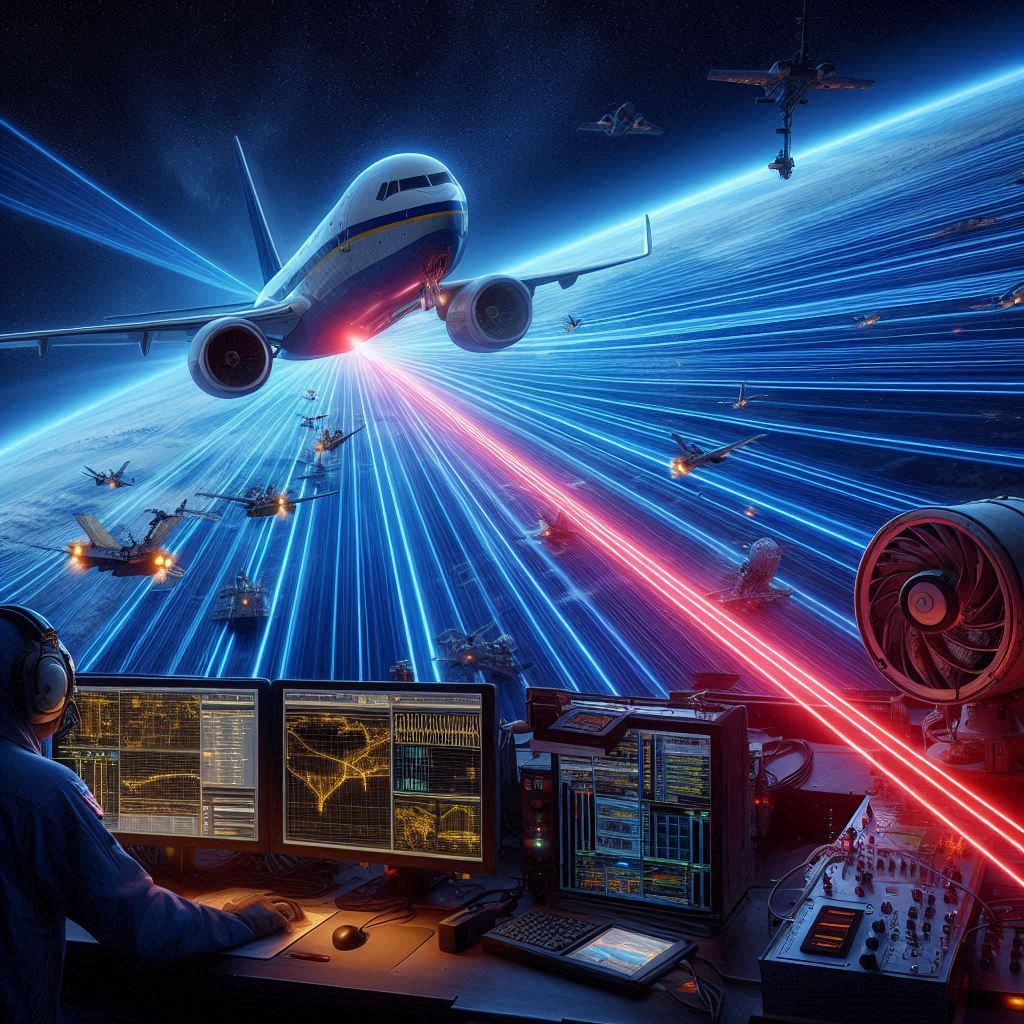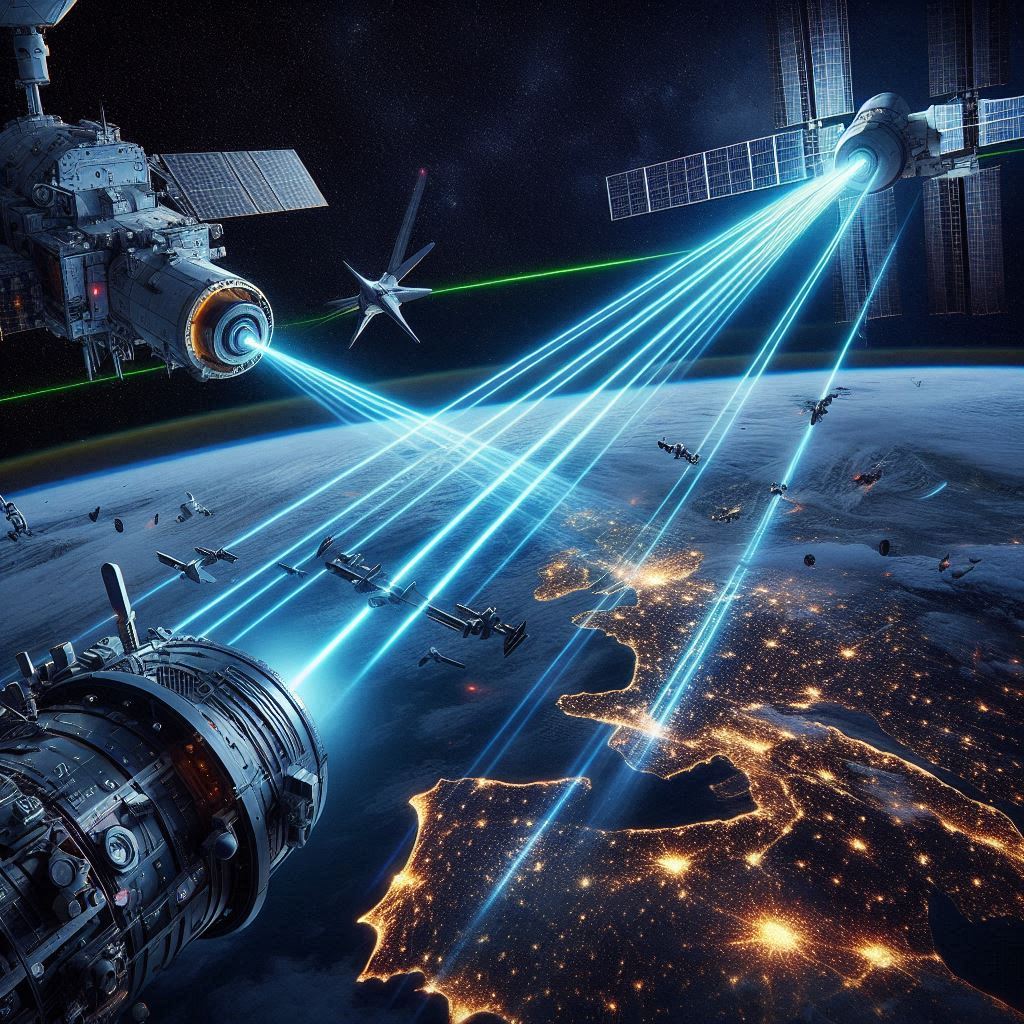NASA Demonstrates Laser Communications from
Aircraft to Space Station
An experimental success for NASA has been to showcase laser communication from an aircraft to the ISS, which is a space technology breakthrough. This peculiar achievement, which falls under NASA’s continuous attempts to advance space information transfer, is in the process of changing how data is relayed between Earth and space assets.
Advanced Space Communication Methodologies and Their Significance
This is why tetrahedral communication will be valuable as humanity begins to delve deeper into space and requires more initial and efficient means of communication. However, conventional RF links, which are widely used for voice communication, have certain drawbacks as far as data rates and channel width are concerned. NASA’s successful demonstration of lasers from an aircraft to a space station is a step towards solving such problems.

The Laser Communications Demonstration
The recent laser communication test from an aero plane to the space station was conducted by NASA, in which a specially fitted aero plane remained high in the sky and transmitted data to a receiver installed on the space station. This test demonstrated the vision to provide integrated terrestrial space with high-rate, high-capacity telecommunications between Earth stations and space vehicles.
Key components of the laser communications system used in NASA's demonstration from aircraft to space station include:
- The sectors include precision pointing and tracking.
- Nanotechnology for the reflectors of the laser beams
- Consumer electronics microprocessors for high-speed data encoding and decoding applications
- Atmospheric turbulence compensation algorithms
NASA's rather recent accomplishment is using lasers to communicate between aircraft and the space station, which should pave the way for future use of the technology.
Advantages of Laser Communications
NASA's demonstration of laser communications from aircraft to space stations highlights several advantages over traditional RF systems:
- Higher data rates: They offer data transfer rates that are seven per cent of those of RF systems and can go up to 100 times that of the current RF systems.
- Increased bandwidth: More information capacity is made available due to the increased frequency of laser light.
- Improved security: Laser beams are slim and pointed, so the probability of them being intercepted is very slim.
- Lower power requirements: The laser systems take less power and can perform similarly to their counterparts.
- Reduced equipment size: laser communication equipment is usually smaller and lighter than RF equipment.
These derivate advantages make demonstrating laser communications from aeroplanes towards SMOS important for NASA in future space exploration missions.
Challenges Overcome
The successful NASA demonstration of laser communications from aircraft to space stations required overcoming several technical challenges:
- Atmospheric interference: Laser beams are easily affected by such factors as clouds, dust, humidity, or any form of atmospheric turbulence.
- Precise pointing and tracking: Stabilizing an aircraft’s link with the orbiting space station and simultaneously or alternately translating a consistent alignment requires precise calibration.
- Doppler effects: The motion of one concerning the other causes a frequency shift that needs to be adjusted.
- Signal acquisition and maintenance: There are severe technical challenges due to the fundamental nature that demands the laser link be established and maintained over long distances.
Still, the challenges unravelling in the experiment emphasize NASA’s achievements in transmitting laser communications from an aircraft to a space station.
Future Applications
The successful NASA demonstration of laser communications from aircraft to space stations opens up a wide range of potential applications.
- Downlink of high-speed data from the Earth observation satellites
- Improved voice and data interaction for interplanetary phased operations
- Better ways of sending high-quality real-time video as well as other data from the ISS
- Better coordination and control of robotic space rovers
- Opportunity to provide satellite Internet services
Thus, with NASA continuing to develop and improve laser communications, I’m positive that these and further applications will appear in the next few years.
International Collaboration
The militantly practical vein of the endeavour is nevertheless informed by the best of international interstellar cooperation: the technology, the subject, the realization of the long-distance beam-up, and the vehicle for it—the craft itself—are all assets and milestones aboard the cooperative, ubiquitous national space vehicle. As mentioned earlier, ISS is an international program that allows experiments and innovations that could be of the essence to the world to be tested and deployed.
Environmental Impact
Another peculiarity of the laser communication demonstration from the aircraft to the space station is that it can be associated with the absence of negative consequences and, on the contrary, can positively impact the environment. Laser communication systems may decrease the overall power necessary for space missions and decrease the size of the required equipment, thus polluting less. This conforms to the strategic framework of scientific sustainability and NASA's policy regarding proper exploration of space and conservation of the earth and its environments in space.
Public Engagement and Education
It also becomes important that agencies like NASA continue to share monumental feats such as laser communications from a flying aircraft to a space station with the public. For the agency, this accomplishment may help call for the next generation of scientists and engineers and increase the interest of people in the STEM sector, as well as the possibilities offered by the space industry.

Conclusion
NASA has showcased laser communications from aircraft to space stations, a new revolution in space technology. This accomplishment also amply demonstrates the agency’s innovative capacity and opens the door to even more rapid, efficient, and secure space communications in the coming days. Since NASA is deep into milestones achieved in space travel, such achievements as this LASER communication system will define the future of humans beyond the earth’s stratosphere.
The recent NASA test of laser-based links between an aircraft and the International Space Station is much more than cool, proving technology is ready for the next level of space communications. In anticipation of further crewed space exploration as far as Mars and beyond, high-speed and high-fidelity communication lines will be preserved. The mission of NASA to develop these technologies means that the firm and society are ready to tackle the next frontiers as we continue to explore space.







